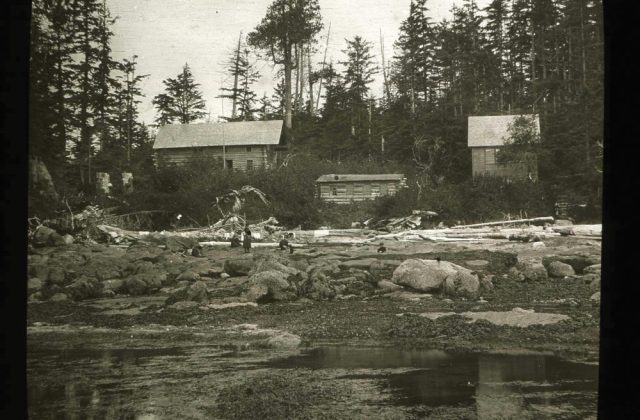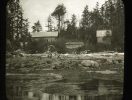By Karen Carmody-McIntosh
We’re going to let you in on a secret: the curators, archivists, and librarians who dedicate their time and talents to the University Libraries don’t actually have superpowers. So when Marguerite Ragnow, Curator at the James Ford Bell Library, was asked by a scholar in Russia if the collection held a 17th-century map of Moscow, she couldn’t rely on X-ray vision to take a lightning fast scan of more than 22,000 maps, folded and bound into the pages of books in the Bell Library’s collection.
What Ragnow knew she needed was a searchable, online repository of the collection’s maps. She drew up a plan for discovery and digitization, and the “Revealing Maps” project was born.
Creating the high-resolution scans of archival documents requires planning, training, and funding. Fortunately, the University Libraries has the expertise and equipment needed to carry out all aspects of a digitization project. Funded by successful grant applications, various units within the Libraries have embarked upon digitization projects that facilitate research and enrich the community, both locally and globally.
From Minnesota to the world
“We digitize to very high standards,” said Molly Huber, Outreach Coordinator for the Minnesota Digital Library (MDL), which is hosted by Minitex, a joint program of University Libraries and the Minnesota Office of Higher Education. Huber travels the state to visit with historical societies, churches, and other nonprofit organizations. She consults with staff at each locale to identify archival materials to include in MDL and its premier collection, Minnesota Reflections.
“We provide them with digitization skills, we talk them through the process, and we teach them how to create metadata.”
No digital surrogate can be findable online without its metadata, the information that accompanies the digital record. Descriptive metadata — the who, what, when, where, and why about the archival document — can typically only be added by someone familiar with the collection.
“We call it their in-kind contribution,” said Huber. “They can’t digitize without us; we can’t have the wealth of content without them.”
Thanks to MDL’s collaboration with the Digital Public Library of America (DPLA), the content from more than 160 Minnesota organizations is made accessible to people across the world. MDL has recently digitized 426,000 new items from seven prominent institutions, creating a tenfold increase in DPLA’s records from Minnesota. Learn more at z.umn.edu/MNdigital
Huber, who has fielded inquiries from as far away as Germany, also sees the local impact.
“I spoke at the Nicollet County Historical Society Annual Meeting and my presentation was full of things that they had contributed. I showed pictures of the 1965 flood and I encouraged people to identify buildings. It was amazing to throw these images up there, evoking community memories that were shared in this big room together.”
New connections and fortuitous finds
Sharing digital content online can increase the odds that researchers will find the right materials without having prior knowledge of a collection. Such was the case when project manager Rebecca Toov at the University Archives began a blog to feature newly scanned content from “Exploring Minnesota’s Natural History,” a project to digitize materials from the Minnesota Geological and Natural History Survey.
More than a year into the work, Toov blogged about a surprising find: the records from a research facility on the shores of British Columbia. The Minnesota Seaside Station, established in 1901, provided an ideal spot for the study of Pacific algae, a research interest of the station’s founder, Josephine Tilden, professor in the botany department and the first woman scientist employed at the University.
Unbeknownst to Toov at the time of her post, Kristine Pearson, a member of the Pacheedaht Heritage Project, was seeking information about Tilden in hopes of finding materials relevant to the history and lands of the Pacheedaht First Nation. After discovering the blog through an online search, Pearson contacted Toov.
“There is one photograph in the print collection of a woman with baskets sitting up by the station house,” said Toov, who shared the image with Pearson and colleagues. “They said she would have come to sell basket goods, which many of the researchers purchased.”
A few weeks later, when scans came back from a collection of glass lantern slides, Toov was able to contact Pearson with news of an exciting find. The slides, created by botanist Ned Huff, documented daily life at the station: the buildings, the researchers, and their interactions with the nearby Pacheedaht people.
“Ned Huff took pictures of everything,” said Erik Moore, head of the University Archives. “His photos of the Pacheedaht are the oldest in existence. They predate anything previously known by about 10 years.”
This significant set of images is viewable online through the Libraries’ UMedia Archive. Alongside Ned Huff’s original captions, they now bear additional notes about the place, practices, and people — important details that enrich the Archives’ knowledge, provided by members of the Pacheedaht Heritage Project. View more images at z.umn.edu/Pacheedaht
To fulfill our mission, better than before
Back at the Bell Library, the “Revealing Maps” project, funded by the National Endowment for the Humanities, is well underway. Library staff and student workers have located a total of 22,413 maps within 11,544 volumes. Among several significant finds was a rare 1708 world map, the Map of 10,000 Countries on the Spherical Earth, by Japanese astronomer Joken Nishikawa was located within the pages of a five-volume geographical treatise. Learn more at z.umn.edu/Nishikawa
The scanning process will wrap up later this year and by the end of 2016 the digital surrogates for all maps will be available online. Beyond the obvious benefit of saving time when searching the collection, Ragnow sees great potential for digitization to enhance the learning experience.
“Mr. Bell was clear when he created this library at the University that it was meant to be accessible to students, to help inspire them to be lifelong learners.”
In pursuit of that mandate, the Bell Library often hosts classroom visits for students at the graduate, undergraduate, and K through 12 levels. A trip to see the maps is part of the yearly curriculum for a local school district’s 8th-grade global history course.
“When they come in, they’re usually so blown away by the actual maps — the fact that they can see them in person and touch them — that they don’t necessarily get a chance to reflect on them in a meaningful way,” said Ragnow, who looks forward to making the maps available online, providing instructors with the opportunity to add follow-up assignments to their lesson plans. “A digital collection allows us to help students in a way that we couldn’t before.”
As it turns out, staff at the Libraries don’t need to have a superpower. They’re doing just fine without one: building connections with communities and researchers, facilitating inquiry and lifelong learning, uncovering the unexpected, and forging new partnerships — all thanks to the hard work of taking a collection and making it digital.






